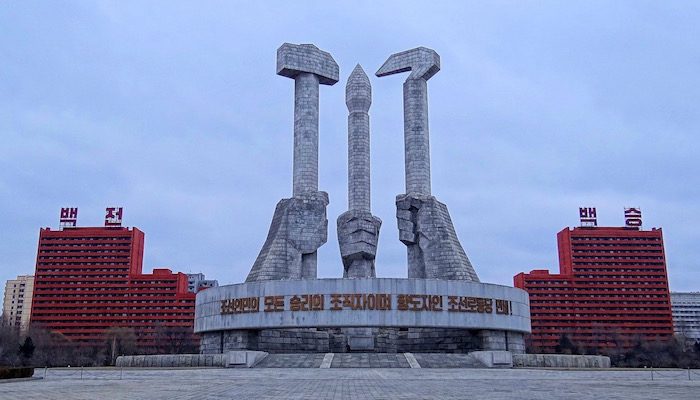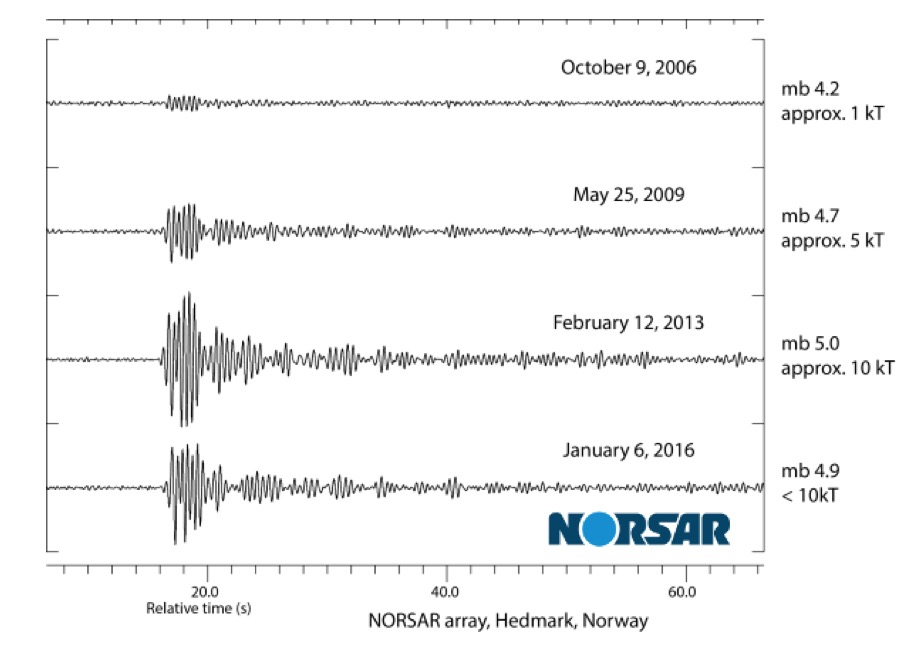
The Democratic Peoples’ Republic of Korea (DPRK) or North Korea conducted a nuclear test on January 6, 2016. The recent test takes the count of nuclear tests conducted by North Korea to a total of four with previous tests in October 2006, May 2009 and February 2013. Following the January 2016 test, North Korea released a statement claiming that it had tested a small H-bomb or thermonuclear bomb.
The North Korea test resulted in widespread global condemnation led by the United Nations Security Council (UNSC), the United States, China, South Korea and Japan. However, subsequent differences over measures to curb the expanding North Korean nuclear and missile arsenal and over imposition of economic sanctions have evoked what Ralph Cossa describes as a sense of déjà-vu.
Rather than dwell on the best possible manner to deal with Pyongyang, this article will focus on the expanding capabilities of the Preparatory Commission of the Comprehensive Test Ban Treaty Organisation (CTBTO)’s International Monitoring System (IMS) to successfully detect even a fairly small nuclear test (up to 0.1kt) in any part of the globe with about 90% probability. Since it was founded in 1996, the IMS capabilities have expanded to its current strength of 321 Seismic, Radionuclide, Infrasound and Hydroacousic stations spread across the globe. The primary aim of the IMS is to ensure that no nuclear test conducted in the atmosphere, underwater, underground goes undetected.
As Ola Dahlman, Jenifer Mackby, Svein Mykkeltveit and Hein Haak have described in their excellent book Detect and Deter: Can Countries Verify the Nuclear Test Ban?, the establishment of the international monitoring network and the ability to detect any nuclear test provides countries with the ability to “improve their detection and deterrence capabilities.” Recent North Korean tests have highlighted the network’s capability to detect a nuclear test. However, the lack of an effective policy response to Pyongyang’s actions highlights the fact that it is the global resolve and intent in addition to the technical capability to monitor such activities that matters.
Seismic Monitoring
Seismic monitoring is a time tested and well developed method to detect and analyse both natural earthquakes and man-made events like nuclear explosions. Over the years, seismic stations located across the globe have successfully detected all the four North Korean tests. The magnitude of the earthquakes following the four tests as recorded by the Norwegian NORSAR seismic monitoring array is depicted in Figure 1. The 2016 nuclear test was detected up by 27 of CTBTO’s seismic monitoring stations. Further analysis of the seismic data has enabled estimation of the location and depth of the test. Both these are important for estimating the probable yield of the nuclear test.

Figure 1: NORSAR Seismic Data of North Korean Tests
The latest analysis by 38 North website estimates the location of the North Korean tests. It points to the fact that the device tested in January 2016 was buried approximately at twice the depth of the 2013 test. This could be indicative of expectation of a higher yield. The same report also points to the fact that after the release of radioactive gasses in the 2006 test, North Korea conducted the subsequent tests at a different location. A geological analysis of the new location brings out the fact that they are located under a type of granitite. This explains the lack or very faint release of radionuclides (also termed as venting) following the 2009 and the 2013 tests.
Radionuclide Monitoring
Detection of radionuclides from a nuclear test provides the clinching evidence to back up initial detection provided by seismic monitoring stations. A portion of the fission products are released in days and weeks following a nuclear explosion. In particular these stations will seek to detect radionuclide noble gasses like Xenon and Argon.
Given the North Korean claim that it conducted a test of a small H-bomb / thermonuclear device, it will be crucial to detect isotopes of Argon (Ar-37) in order to verify the North Korean claim. Though the Argon levels in the atmosphere are low, the international community does not have any prior experience in detecting Argon following nuclear tests. If the North Koreans had conducted a thermonuclear test, most of the residual products would not travel very far and would settle close to the site of the explosion.
In addition, the North Korean leadership has attempted to prevent venting by burying the nuclear device under hard rock like granite. Given this, the probability of cracks developing in the aftermath of a test is less, thereby reducing the chances of detecting radionuclides from the test as observed in the 2009 and 2013 tests. Though radionuclide stations in Japan have begun collecting radionuclide samples, a final analysis will be available after 50-60 days following the test.
Conclusion
In short, the CTBTO’s International Monitoring System (IMS) of seismic stations worked very well in near-time detection and identification of the North Korean nuclear test. The radionuclide network is in the process of collecting and analysing samples of fission products released from the North Korean test. Therefore, it is possible that we might eventually have a definitive answer to the question as to whether North Korea tested a thermonuclear device.
However, the fact that Pyongyang conducted its fourth nuclear test is itself a worrying fact given that it could enable the Kim regime to work towards miniaturizing its nuclear warhead and launch them using long range missiles. This will be possible if North Korea modifies its Unha-3 launch vehicle into a ballistic missile. Trajectory analysis using the Quo Vadis software developed at the National Institute of Advanced Studies (NIAS), Bangalore points to the fact that North Korea could launch a 1000kg payload (which is sufficient to carry a nuclear warhead) on the modified Unha-3 to reach Alaska and northern Canada. Further reduction of the mass of the payload might allow the missile to target parts of western United States.
In the past, global responses to the North Korean nuclear and missile tests have largely been restricted to condemnation, passing resolutions and sanctioning its nuclear and missile programmes. These have proven largely ineffective in forcing the North Korean regime to change course as recent plans to launch a satellite in February 2016 highlight. Sanctioning the North Korean economy and its leadership seems to be the best possible short-term option available to the international community. The question is whether those required hard choices will be made to properly deal with North Korea. If not, it will be matters as usual in the Korean Peninsula.
Further Reading on E-International Relations
- Opinion – North Korea’s Nuclear Tests and Potential Human Rights Violations
- North Korea’s Nuclear Quest
- Does Denuclearization Mean Giving up North Korea’s ‘Treasured Sword’?
- Trump’s Nixon-China Moment with North Korea
- Trump’s ‘Personalised’ North Korea Policy: 2018–2020 and the Way Forward
- Normalization Negotiations between North Korea and Japan Revisited